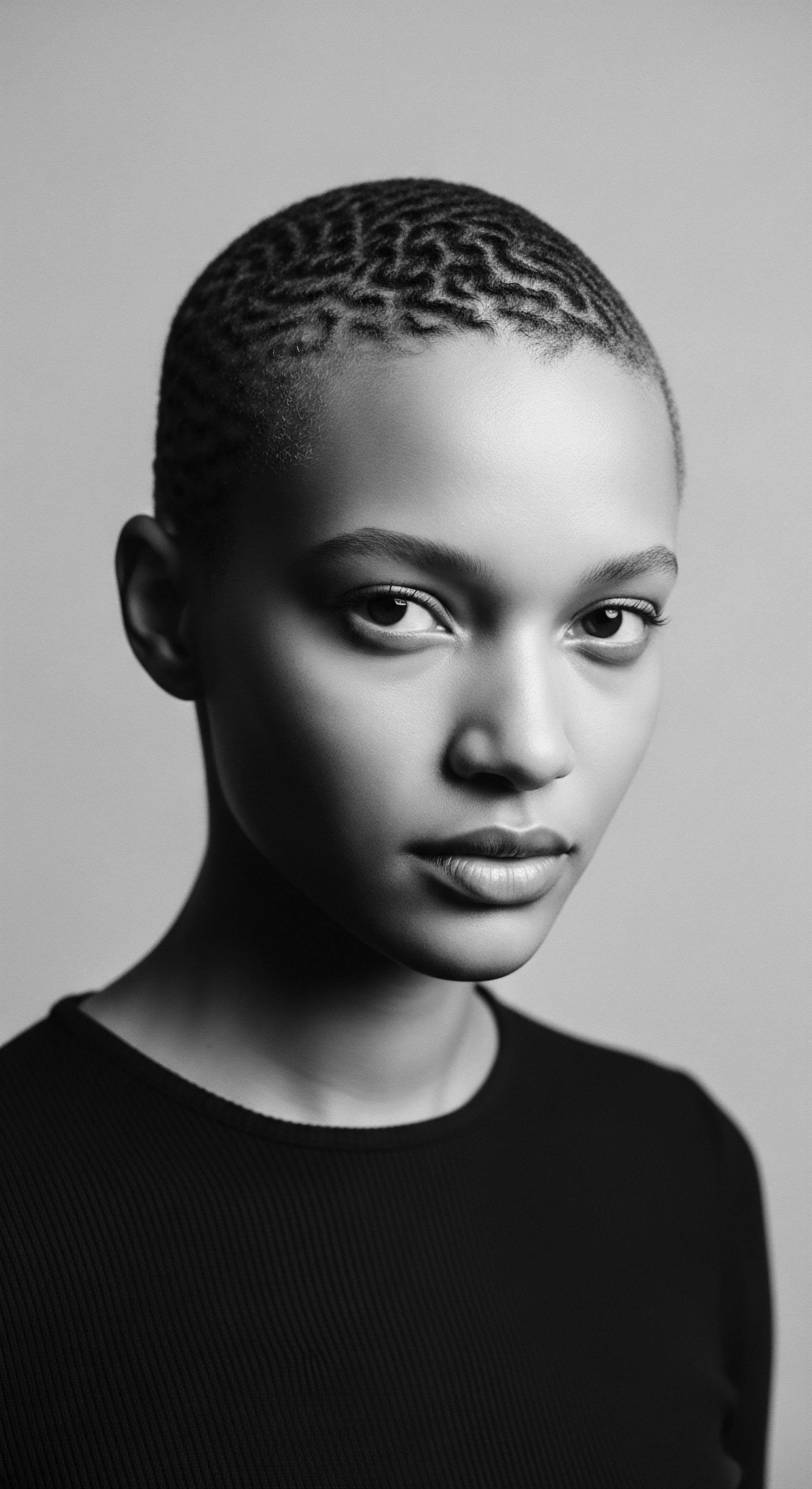
Roots
Consider for a moment the silent language of our strands, the unspoken history etched within each coil and kink. For those of us whose lineage traces through the vast and varied landscapes of Africa and its diaspora, our hair is not merely a crown; it is a living document, a testament to endurance, innovation, and belonging. It carries the whispers of savannah winds, the resilience cultivated under equatorial suns, and the ingenuity born of necessity.
This exploration delves into how the very texture of our hair reflects ancestral survival, a deep genetic memory of adaptation and thriving against formidable odds. It is a story told not in words alone, but in the helical structure of melanin-rich fibers, in the inherited wisdom of care, and in the enduring spirit of a people.

How Did Hair Biology Adapt Through Generations?
The unique architecture of textured hair, often characterized by its elliptical cross-section and twisted, helical growth, presents a remarkable example of human biological adaptation. Imagine early human ancestors on the African continent, exposed to intense ultraviolet radiation. The tightly coiled nature of textured hair, with its denser packing of strands, likely created a more effective thermal insulation layer for the scalp, safeguarding the brain from overheating.
This natural shield also provided significant protection against harmful UV rays, minimizing sun damage to the scalp. Moreover, the elasticity inherent in such curls might have allowed for greater air circulation directly on the scalp, which in turn could aid in evaporative cooling—a subtle yet profound advantage in hot, humid climates.
The sebaceous glands, which produce the natural oils essential for hair health, also played a role. In textured hair, these oils often travel a more circuitous path down the coiled shaft, making the hair naturally drier at the ends. While this presents care challenges today, ancestrally, it might have contributed to a less oily scalp, potentially reducing the likelihood of certain scalp infections in environments where frequent washing was not feasible or where water was scarce.
Textured hair’s distinct biological structure narrates a genetic story of adaptation, offering vital protection against ancestral environmental challenges like intense sun and heat.
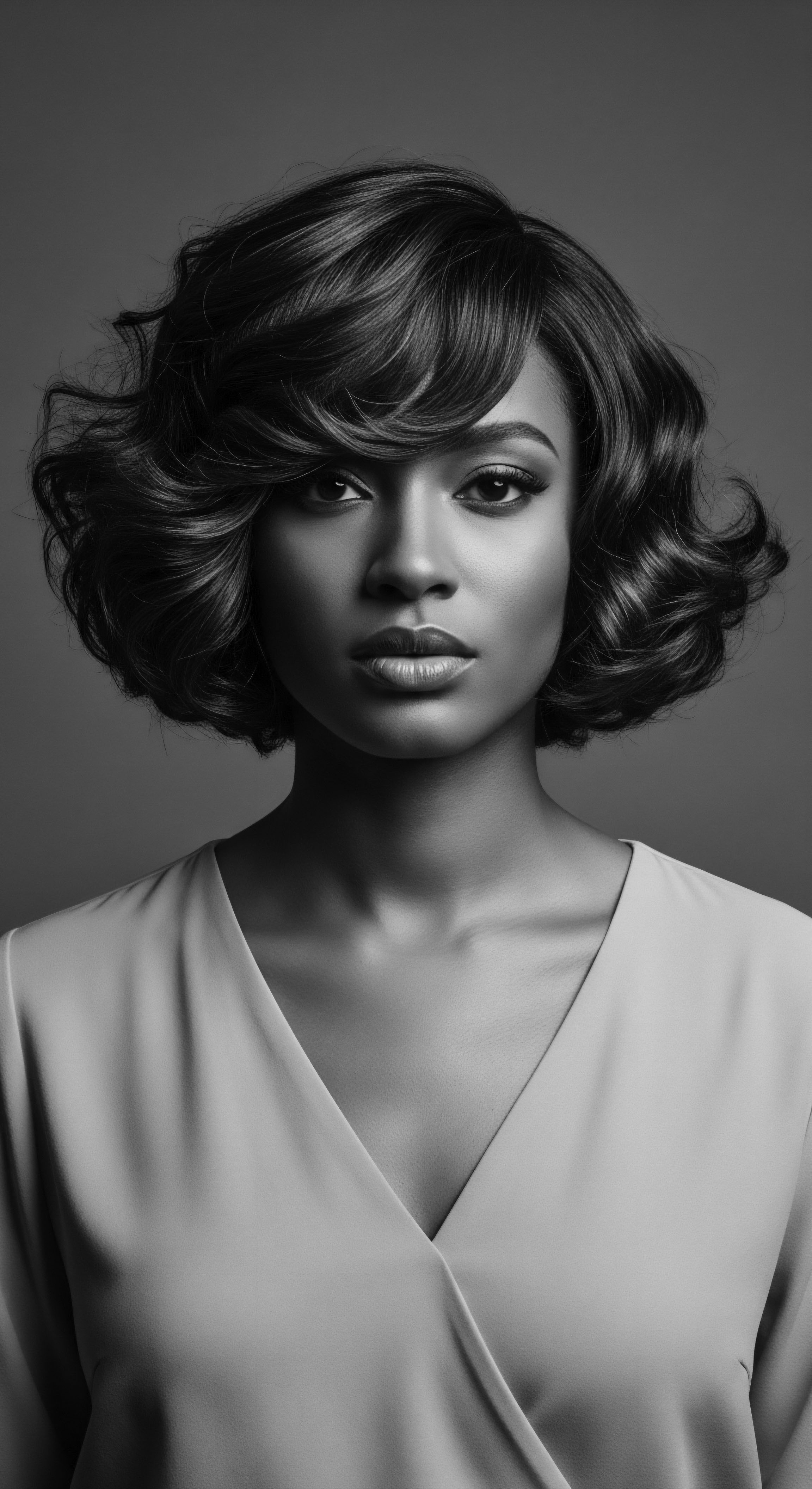
What Does Hair Classification Tell Us About Heritage?
Contemporary hair classification systems, while practical for modern care, often fail to account for the deep historical and cultural contexts from which textured hair truly arises. Take, for instance, the Andre Walker hair typing system, which categorizes hair from 1 (straight) to 4 (kinky/coily). While helpful for identifying curl patterns, it does not speak to the ancestral significance or the incredible diversity within each category, nor the spectrum of mixed-race hair experiences.
Older, unscientific classifications, sometimes rooted in colonial observations, often reduced a vast array of textures to broad, often derogatory, terms. This historical lens reveals that the language we use to classify hair has its own heritage, sometimes one of prejudice, underscoring the importance of reclaiming and reframing these descriptors through a lens of respect and ancestral connection.
True understanding of textured hair classification, then, must extend beyond simple pattern recognition to grasp the geographical and genetic heritage embedded within it. The variations in curl tightness, strand density, and porosity across different African ethnic groups, for example, are not random occurrences. They are the subtle indicators of thousands of years of distinct migratory paths, environmental pressures, and group isolations that fostered unique genetic expressions.
- Melanin Concentration ❉ A primary biological factor, often linked to the protective qualities against sun exposure in ancestral regions.
- Follicle Shape ❉ The elliptical or flattened shape of the hair follicle determines the curl’s tightness and direction, a trait passed down through family lines.
- Cuticle Layer ❉ The arrangement of cuticle scales influences porosity, another inherited characteristic shaping how hair interacts with moisture.
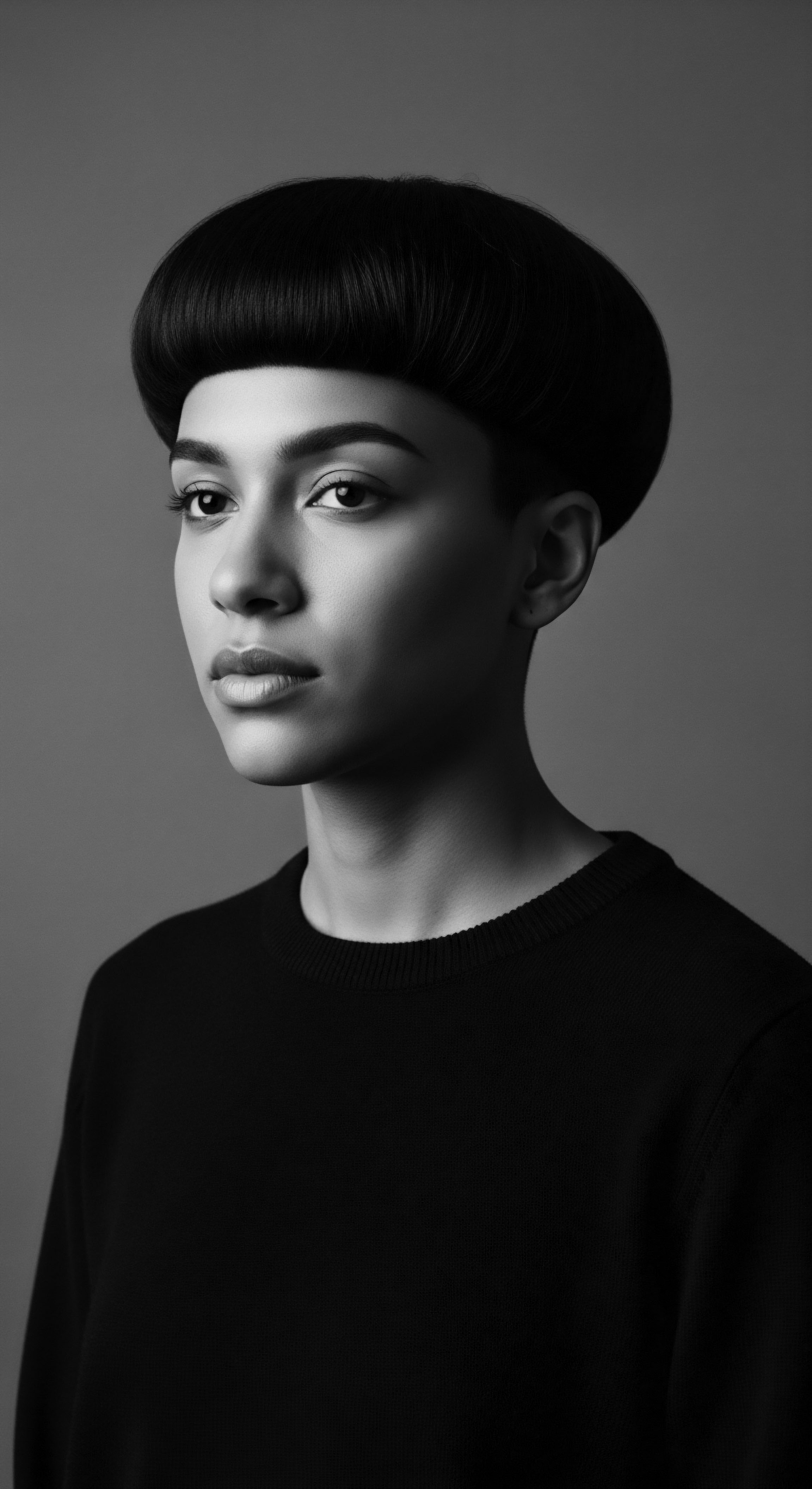
Ritual
From the very moment our ancestors began to shape their hair, a profound ritual took hold—a practice that transcended mere aesthetics. These were not simply styles; they were intricate systems of communication, protection, and identity, each strand a brushstroke in the living art of ancestral survival. This section explores how textured hair has always been a central canvas for ancestral styling, techniques, and the tools that were part of these heritage practices.
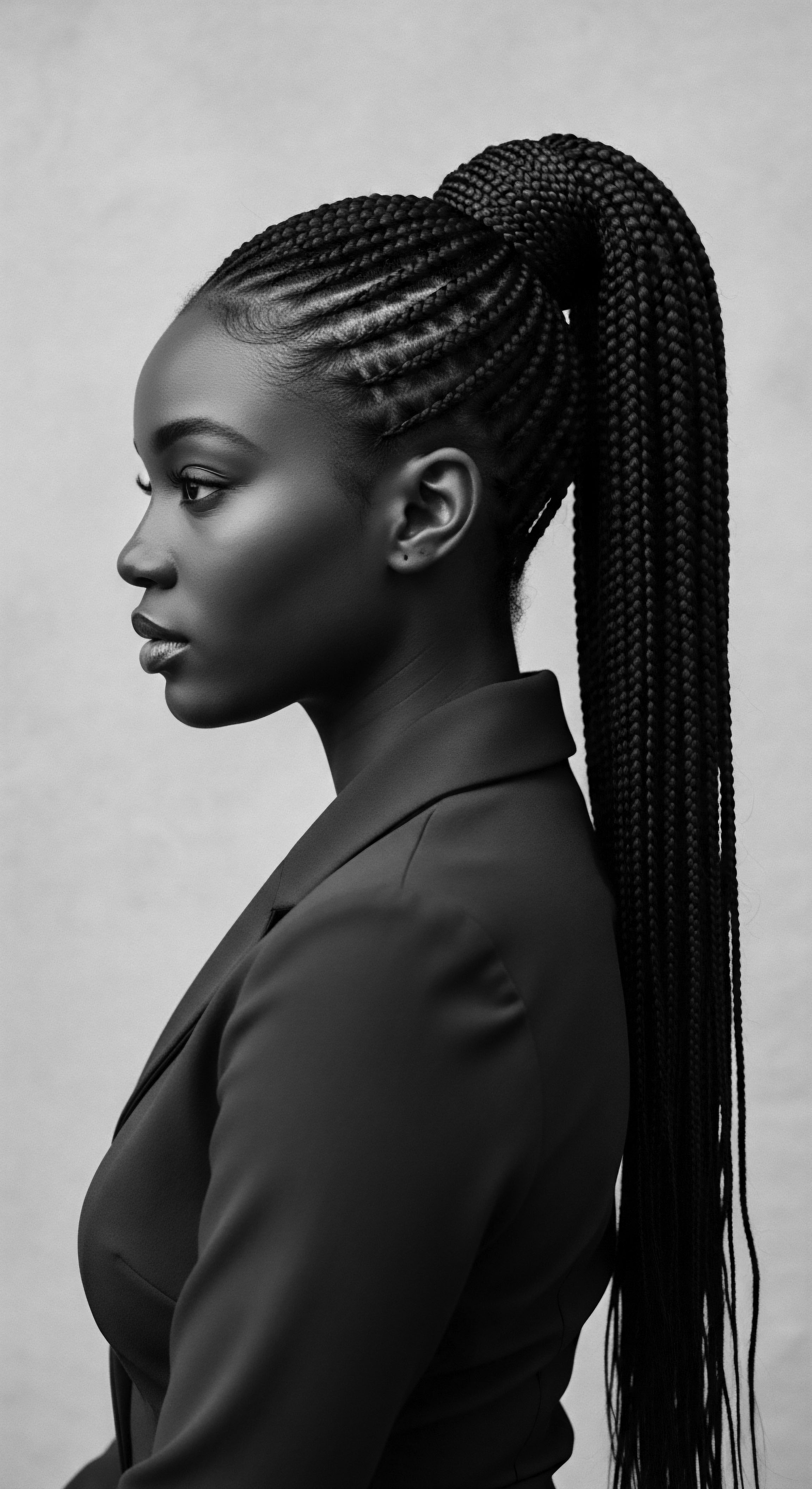
How Do Ancient Styling Practices Inform Modern Protective Looks?
Protective styles, so vital to textured hair care today, are not new inventions. Their origins are deeply rooted in ancestral practices, often born of necessity and environmental wisdom. Consider the meticulous art of braiding, found across countless African cultures for millennia. Beyond their decorative qualities, braids served critical purposes.
They protected strands from the harsh elements, minimized breakage, and offered a practical way to manage hair during agricultural work or long journeys. Certain intricate patterns, like cornrows, were used by various communities as maps, encoding escape routes during times of conflict or enslavement, their designs holding silent, powerful directives. This oral history, passed down through generations, highlights how styling was a direct act of self-preservation and communal solidarity (Byrd & Tharps, 2014).
The use of extensions, too, has a long heritage. Prior to synthetic or human hair extensions, plant fibers, wool, or even animal hair were skillfully braided or woven into natural hair to create more elaborate styles or to simply add bulk and further protection. These practices speak to a deep understanding of hair manipulation and the drive to preserve and adorn one’s crown, even with limited resources.
| Ancestral Practice Elaborate Braiding Patterns (e.g. Fulani, Cornrows) |
| Survival Context Protection from sun/dust, hygiene, status, coded communication (maps). |
| Contemporary Echo Protective styles, minimizing manipulation, cultural pride. |
| Ancestral Practice Use of Natural Butters/Oils (e.g. Shea, Coconut) |
| Survival Context Moisture retention in arid climates, scalp health, sun barrier. |
| Contemporary Echo Moisturizing regimens, scalp massage, ingredient awareness. |
| Ancestral Practice Head Wrapping/Turbanry |
| Survival Context Thermal regulation, sun protection, spiritual symbolism, hygiene. |
| Contemporary Echo Fashion statements, hair protection at night, cultural identity. |
| Ancestral Practice These enduring practices reveal hair as a living archive of heritage and adaptation. |

What Can We Learn from Traditional Hair Care Tools?
The tools used in ancestral hair care were often simple, yet profoundly effective, speaking volumes about the resourcefulness of our forebears. Combs carved from wood or bone, for instance, were crafted not only for detangling but also for scalp stimulation, believed to promote blood circulation and healthy growth. These weren’t mass-produced items; each could be a unique piece, perhaps a family heirloom, imbued with the energy of the hands that shaped and used it across generations. The very act of combing was often a communal affair, a moment of bonding and knowledge transfer, particularly between mothers and daughters.
The hands themselves were the most significant tools. Finger-combing, twisting, and knotting techniques were perfected over centuries, demonstrating an intimate understanding of textured hair’s delicate nature and its need for gentle handling. This emphasis on minimal manipulation, a cornerstone of ancestral care, remains a guiding principle in many modern textured hair regimens, preventing unnecessary stress and breakage.
The communal acts of traditional hair care, often involving intricate braiding and the use of simple, hand-carved tools, were deeply woven with identity and knowledge transfer.
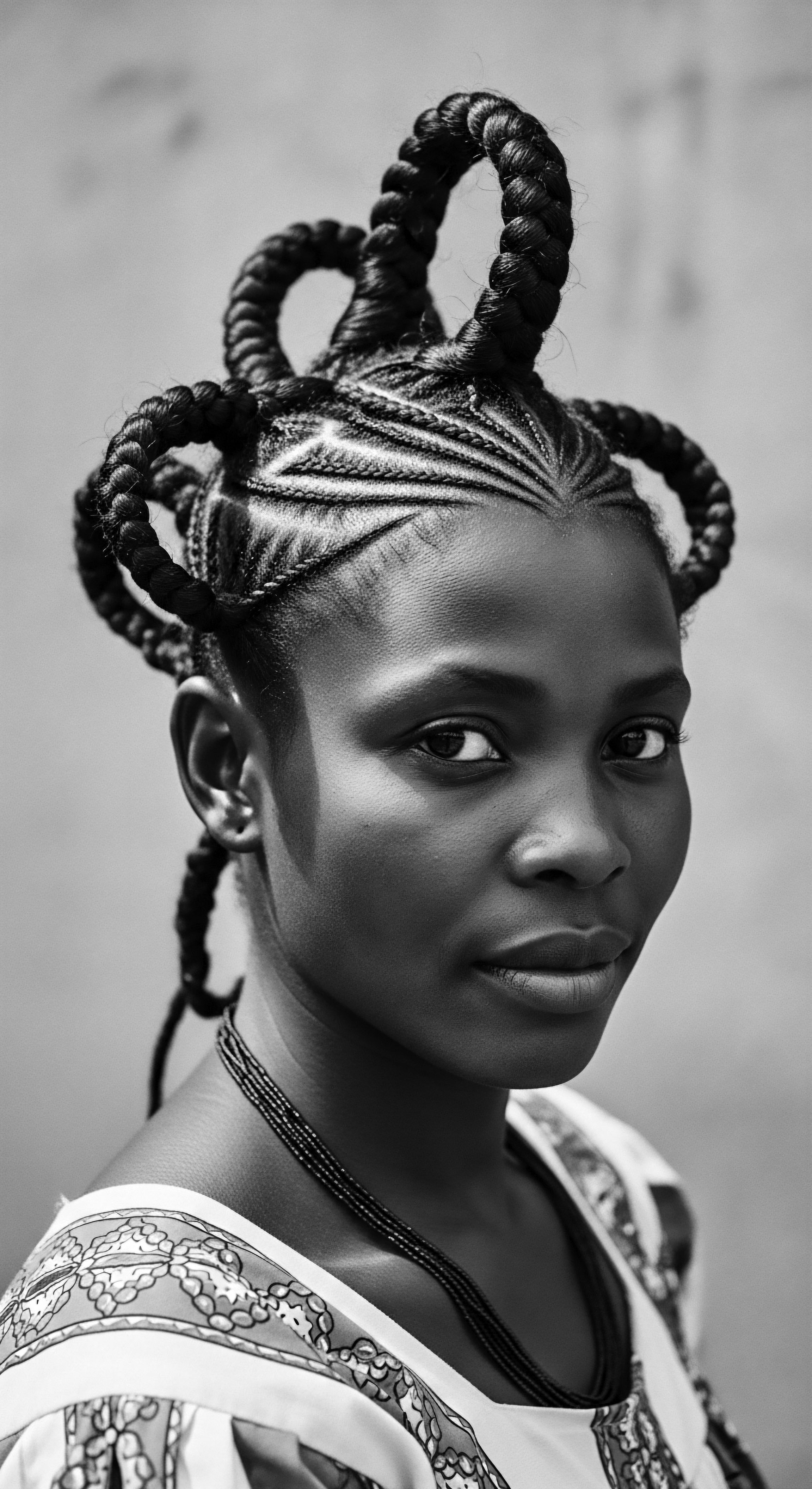
Relay
The wisdom of our ancestors, a deep well of knowledge often transmitted through the silent language of touch and communal practice, truly shines in the realm of holistic hair care. This section explores how textured hair care, particularly nighttime rituals and ingredient choices, reflects ancestral survival and offers solutions rooted in time-honored practices.
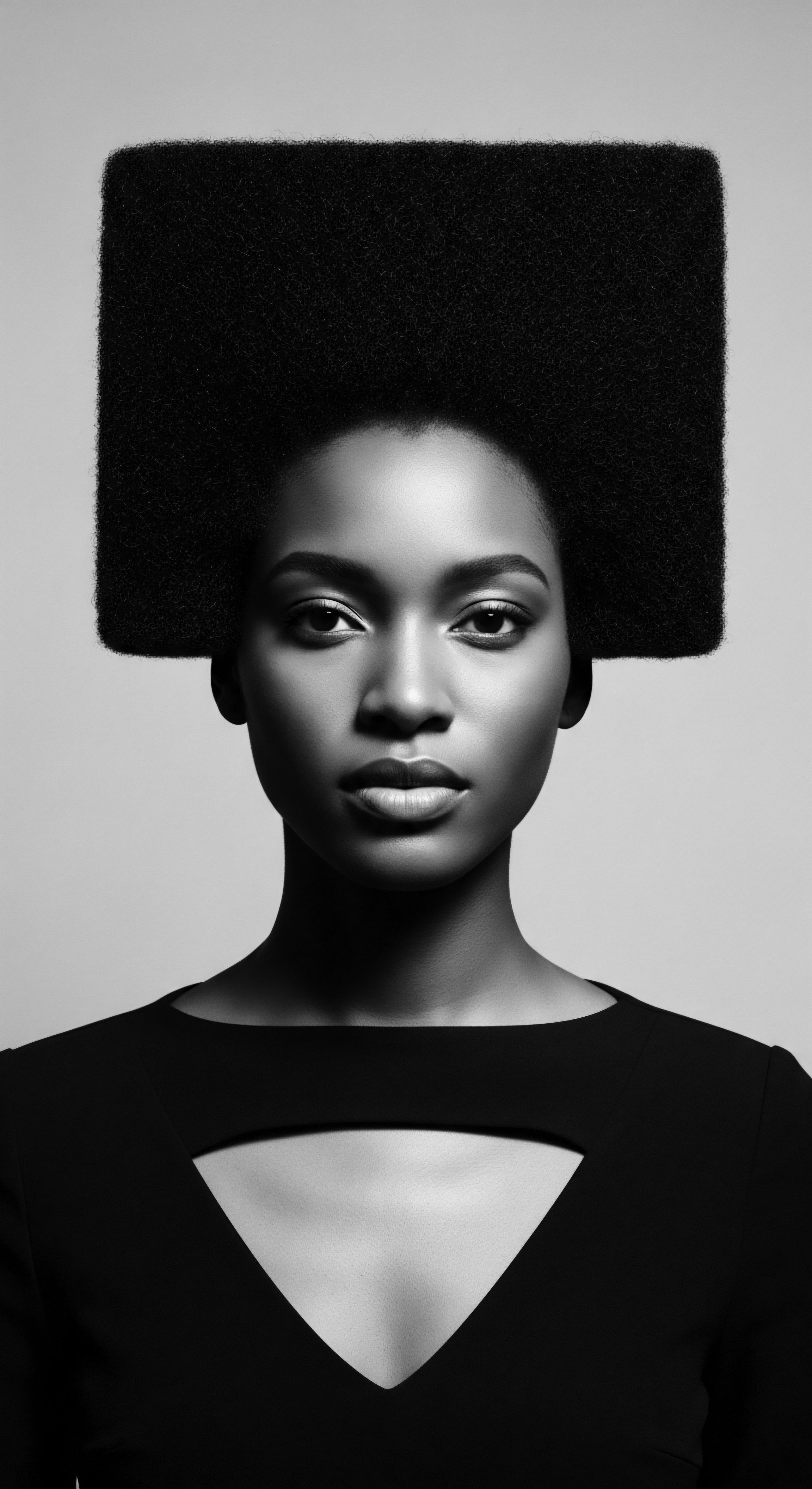
How Do Nighttime Rituals Mirror Ancestral Wisdom?
The practice of protecting one’s hair at night is a testament to the enduring ingenuity and resourcefulness of our ancestors. While the modern satin bonnet may seem like a contemporary invention, its lineage can be traced back to head wraps, scarves, and various forms of head coverings used across African cultures for centuries. These coverings served a dual purpose ❉ they preserved hairstyles from daily wear and tear, extending their longevity, and crucially, they provided a protective barrier against harsh environmental elements, dust, and even insects during sleep. This foresight prevented breakage, maintained moisture, and contributed to overall hair health, especially in contexts where hair washing was less frequent due to water scarcity or lack of suitable cleansing agents.
Consider the meticulous evening routines described in historical accounts of various West African societies, where women would often re-twist or re-braid their hair before resting, sometimes applying natural oils. This nightly attention wasn’t merely about vanity; it was a practical necessity for maintaining strong, resilient strands that could withstand the demands of daily life. The continuation of these rituals, albeit in modern forms, speaks to an inherited understanding of hair’s vulnerability and the importance of its preservation.
- Silk/Satin Bonnets ❉ A modern adaptation of ancestral head wraps, reducing friction and preserving moisture in a controlled environment.
- Hair Oiling/Greasing ❉ Historically, a barrier against dryness and environmental aggressors; today, a method for sealing moisture and promoting scalp health.
- Protective Styling for Sleep ❉ Rebraiding or twisting before bed, echoing ancient techniques to minimize tangling and breakage.

What Ingredients Did Ancestors Use for Hair Wellness?
The ancestral pharmacy for hair care was the land itself, rich with botanicals whose properties were understood through generations of observation and experimentation. Shea butter, for example, originating from the shea tree native to West Africa, has been revered for its moisturizing and protective qualities for centuries (Maranz, 2000). Its natural emollient properties made it ideal for conditioning textured hair, which tends to be prone to dryness due to its coiled structure. Similarly, various indigenous oils derived from nuts and seeds, as well as plant extracts, were skillfully applied to scalps and strands not only for their conditioning benefits but also for their purported medicinal properties, addressing issues like dryness, flaking, or even minor scalp irritations.
The knowledge of these ingredients was often passed down orally, a testament to collective ancestral intelligence. Recipes for hair masks or cleansing agents were not written down but lived experiences, shared within families and communities. This deep connection to natural remedies signifies a holistic approach to hair health, viewing the hair and scalp not in isolation but as an integral part of overall well-being.
The ancestral use of natural ingredients like shea butter underscores a holistic approach to hair health, recognizing the land’s offerings as primary sources of nourishment and protection.
The understanding that certain plant-based compounds could soothe, strengthen, or cleanse hair demonstrates a sophisticated, empirical knowledge system that predates modern chemistry. These practices were not random acts; they were informed by centuries of lived experience and keen observation of the natural world, a form of ethnobotanical science applied directly to the needs of textured hair. This deep heritage of ingredient wisdom informs contemporary natural hair movements, which seek to reconnect with these traditional remedies and integrate them into modern care regimens, recognizing their efficacy and respect for the hair’s natural state.
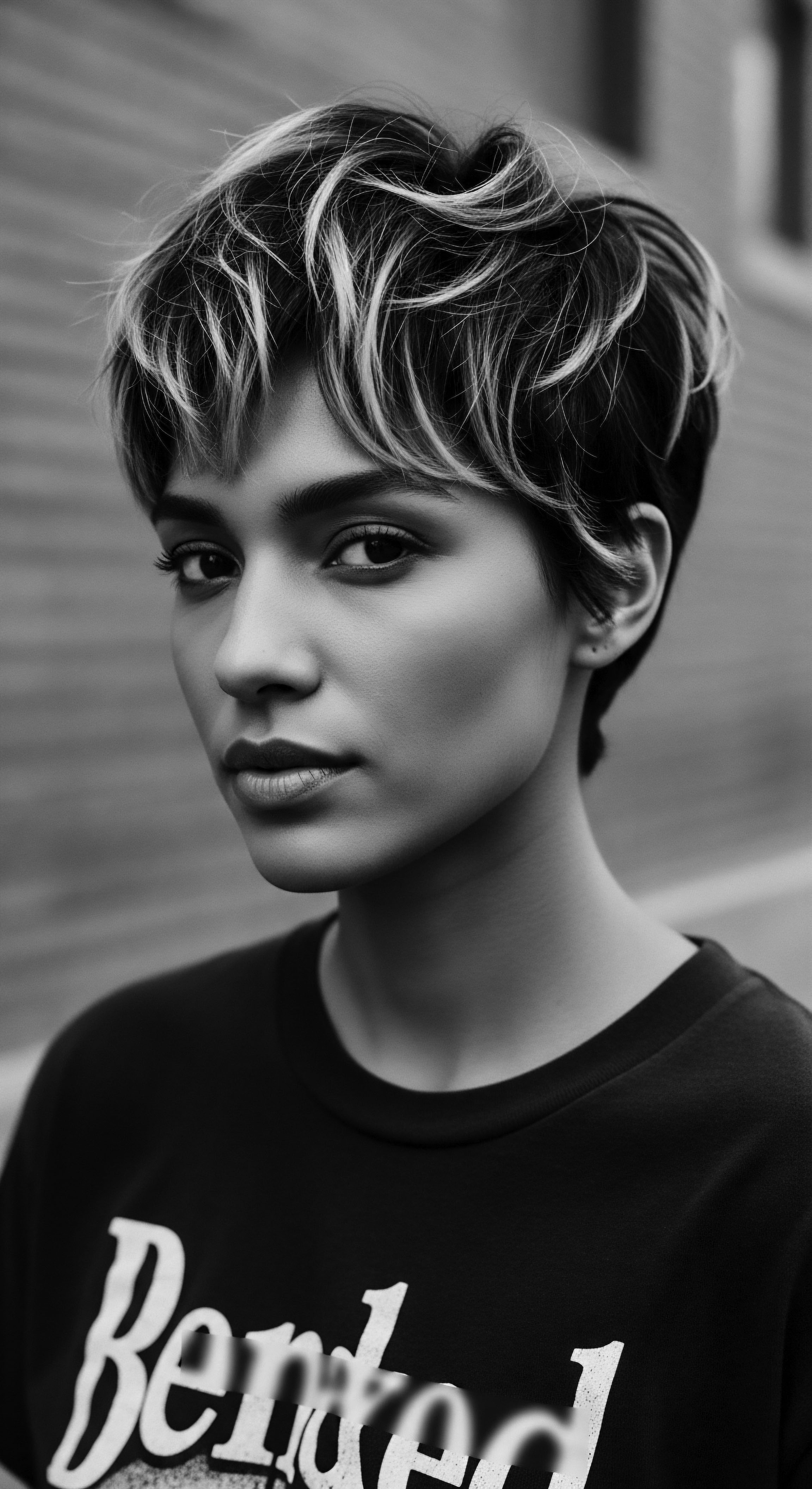
Reflection
To truly understand how textured hair reflects ancestral survival is to engage in a profound contemplation of heritage, memory, and the indomitable spirit of a people. Each curl, each wave, each twist carries within it not merely genetic code, but the echoes of journeys taken, challenges surmounted, and wisdom preserved. It is a living archive, a continuous link to those who came before us, a reminder that resilience is not just a concept, but a tangible legacy woven into our very being. The hair on our heads, in its multifaceted expressions, stands as a quiet yet powerful monument to adaptation, cultural ingenuity, and the enduring celebration of identity against the currents of time.
This realization invites us to approach our hair not as something to be tamed or altered to fit external norms, but as a sacred extension of self, a vibrant connection to our past. It calls for care that is deeply informed by ancestral wisdom, validated by modern understanding, and propelled by a sense of pride. The journey of our strands, from elemental biology to the living traditions of care and community, and ultimately to its role in voicing identity and shaping futures, is an ongoing story. It is a tale that speaks of survival, certainly, but more so, it speaks of thriving, of beauty born from strength, and of a heritage that continues to flourish with every strand.
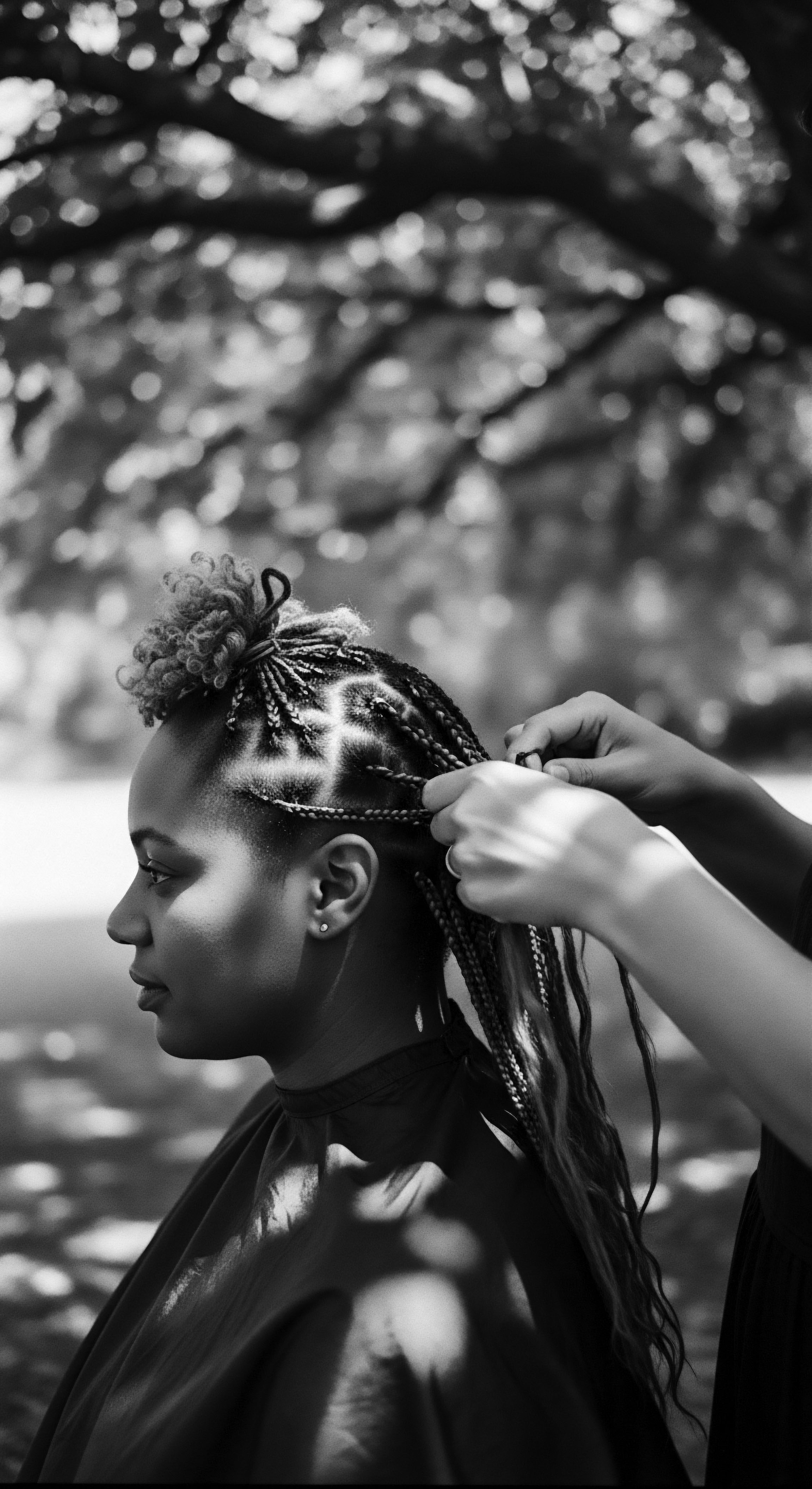
References
- Byrd, A. D. & Tharps, L. D. (2014). Hair Story ❉ Untangling the Roots of Black Hair in America. St. Martin’s Griffin.
- Maranz, S. (2000). The Shea Butter Handbook ❉ A Guide for Manufacturers, Users, and Consumers. Nutty Acres Publishing.
